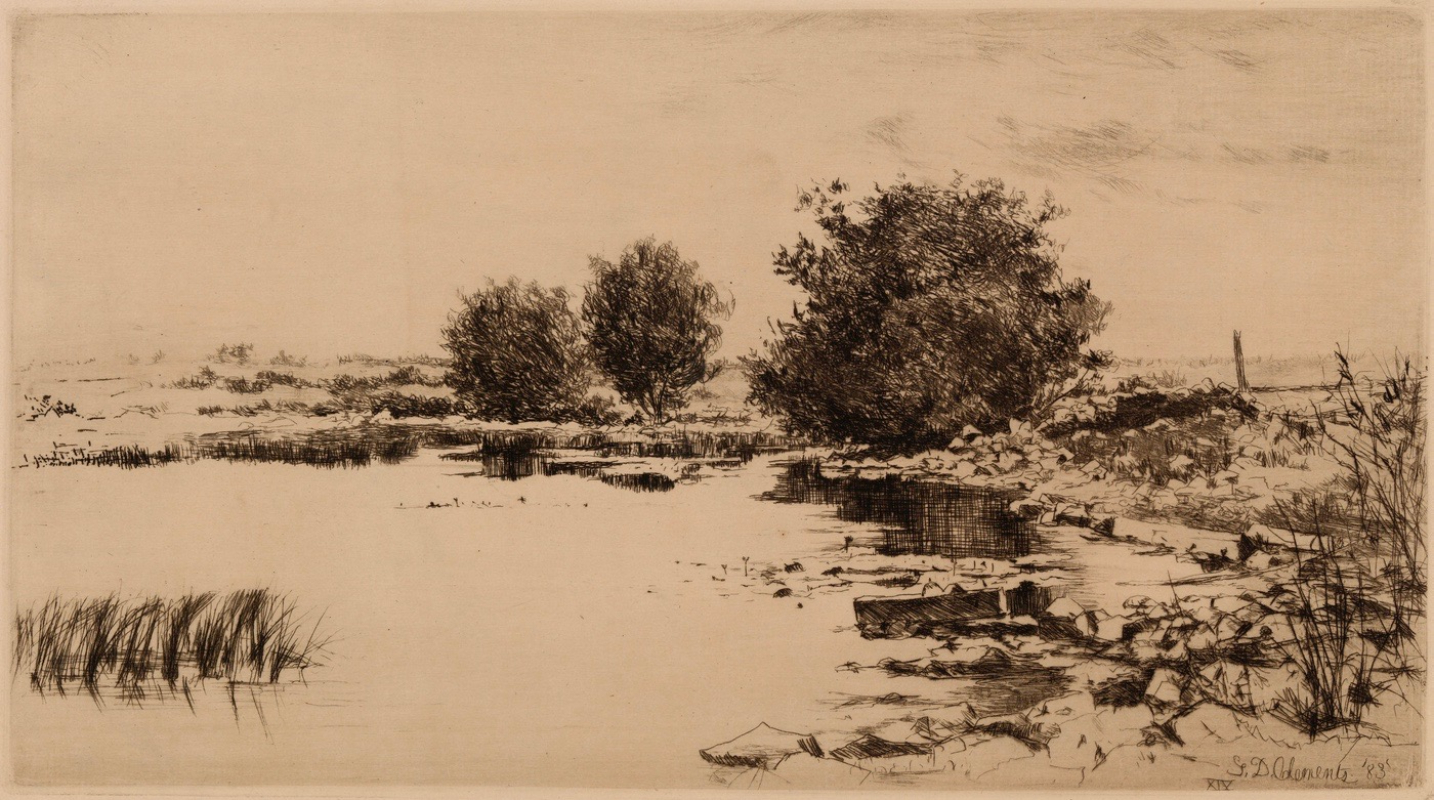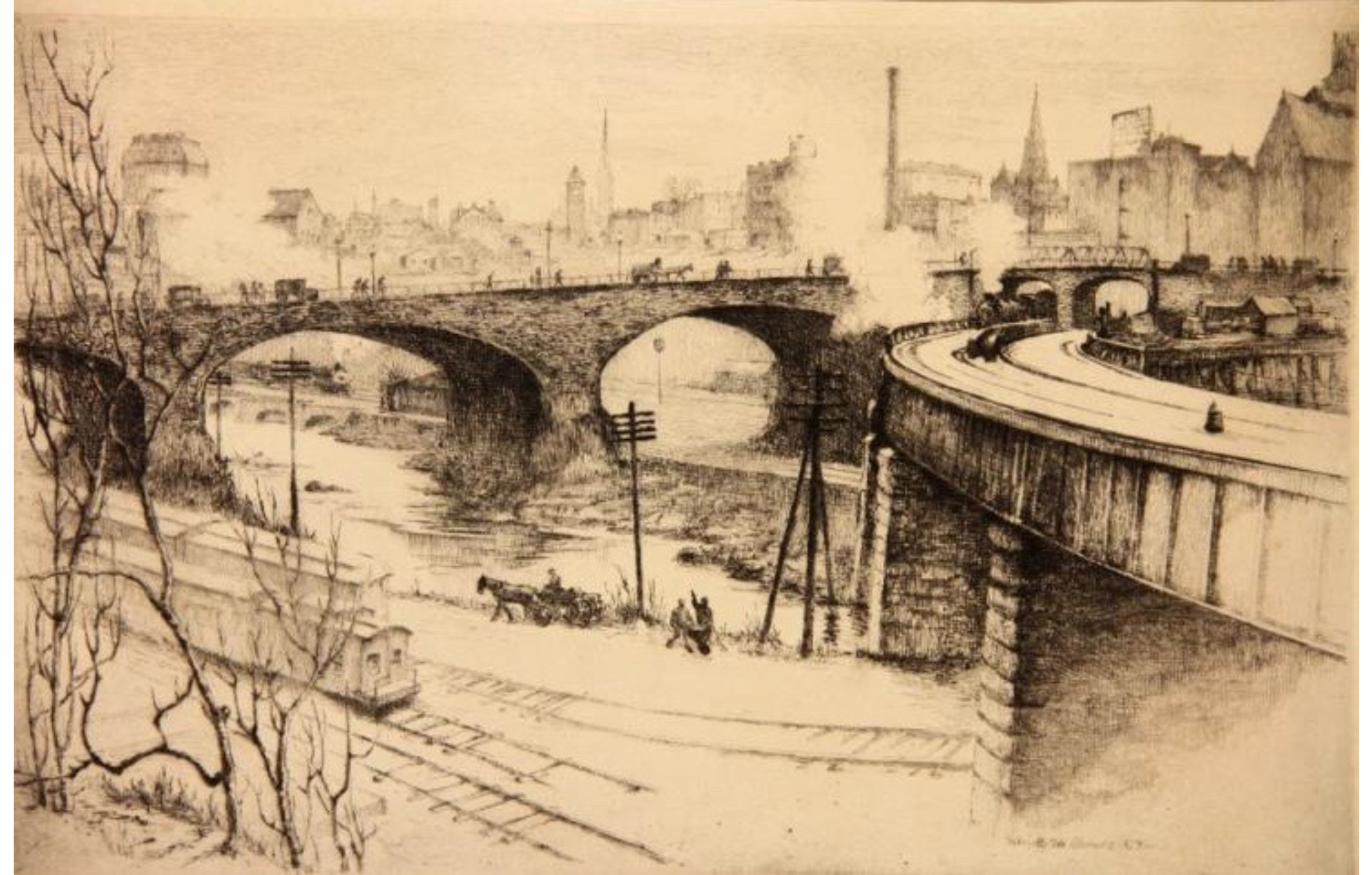
Gabrielle de Veaux Clements: Artist, Teacher and World Traveler
Guest blogger Nicole Viglini, '04J, is the International Fine Print Dealer’s Association Intern at the Smith College Museum of Art.
One intriguing aspect of The Gladys Engel Lang and Kurt Lang Collection is that half of the artists represented in it are women, many of whose legacies have drifted out of popular consciousness due in large part to consequences of their gender. While many remain relatively obscure, others left traces of their legacy in the public sphere and are more widely renowned, such as Gabrielle de Veaux Clements, born in Philadelphia in 1858. Clements’s parents, Richard Clements and Gabrielle de Veaux, supported her inclination to create art, and as a teen, she attended the Philadelphia School of Design for Women, studying lithography and drawing. Subsequently, she attended Cornell University, and after graduating in 1880, she studied under the painter Thomas Eakins at the Pennsylvania Academy of Fine Arts (PAFA). PAFA was among the vanguard of institutions in the United States and in Europe providing educational opportunities for women artists. Clements operated among a significant cohort of women also educated at PAFA in the late nineteenth century, including Mary Cassatt, Cecilia Beaux and Violet Oakley.
In 1883, Clements learned etching under Stephen Parrish and began to produce and exhibit her work in a professional capacity. The following year she traveled to Paris and studied at the Académie Julian, an alternative school to the École des Beaux Arts that, unlike the École, admitted women. Rodolphe Julian established the academy in 1868, in order to provide training for artists wishing to enter the prestigious École. However, it soon became an esteemed institute in its own right, and was the best alternative option for women who wished to receive rigorous training in Paris. It was here that Clements met the artist Ellen Day Hale, her future life partner. The Hales were prominent in Boston’s politics, publishing, social reform and art worlds. The Hale family papers are represented in the Sophia Smith Collection, and include correspondence written by Clements.
Upon returning to the United States from Paris, Clements continued to exhibit her art at institutions including Boston’s Museum of Fine Arts and the National Academy of Design. She also began to teach other women artists out of her Philadelphia-based studio. In 1895, Baltimore’s Bryn Mawr School, a college preparatory academy for girls, hired Clements to teach art. She taught there for fifteen years. While she was living in Baltimore, the Bendann Galleries commissioned her to portray the city in nine etchings, which she completed between 1896 and 1931. The views she portrayed included the Johns Hopkins Hospital, Mt. Vernon Place, the Washington Monument, Baltimore Harbor, Battle Monument, Shot Tower, and the North Avenue Bridge.

Gabrielle de Veaux Clements. American, 1858–1948. North Avenue Bridge Baltimore (Where North Meets South), 1927. Hard-ground etching with drypoint, printed in black on medium weight, smooth, cream-colored paper. Photography by Nicole Viglini. The Gladys Engel Lang and Kurt Lang Collection. SC 2014.32.455.
In this 1927 etching, Clements portrays the city of Baltimore looming hazily above various forms of commerce and transportation, showing the inner gears of the city turning. Center to the piece is a remnant of rural transit in the form of a man in a horse-drawn cart, and another pushing a wheelbarrow. This inclusion could represent nostalgia for an agrarian past, or the continuing relationship between urban centers and their reliance on rural goods. Trains, automobiles, and pedestrians crisscross the various pathways and bridges above and surrounding this iconic scene, and the placid waterway simultaneously suggests nature in its unperturbed form and human manipulation of the surrounding environment. A comparison of this piece to her earlier work above, At the Seashore, underscores the environmental changes wrought by America’s Industrial Revolution.
Some of Clements’s other commissioned projects included five murals for churches in Washington, D.C., and murals for the cities of Detroit, Philadelphia and Chicago. Clements asserted that she “learned to do large decorations” while studying at the Académie Julian. According to an article in an 1898 edition of The Philadelphia Inquirer, in gaining a commission to paint the chancel at the Trinity Episcopal Church in Towson, MD, “Miss Clements competed with half a dozen artists… and came off victorious,” a testament to her skill and renown.
Throughout her life, Clements created art and instructed others. She and Hale spent their summers at a house Clement bought on Cape Ann, Massachusetts, in Folly Cove, a popular summer locale among artists. During World War I, they taught etching and color printing to young women artists in Charleston, South Carolina. They frequently traveled abroad during winter, often to Europe, and continued to produce art throughout their entire lives. Clements died in 1948 in Rockport, Massachusetts. Her work can be found in various East Coast repositories, including the Library of Congress, the National Museum of American Art, the Boston Museum of Fine Arts and Pennsylvania’s Bryn Mawr College.